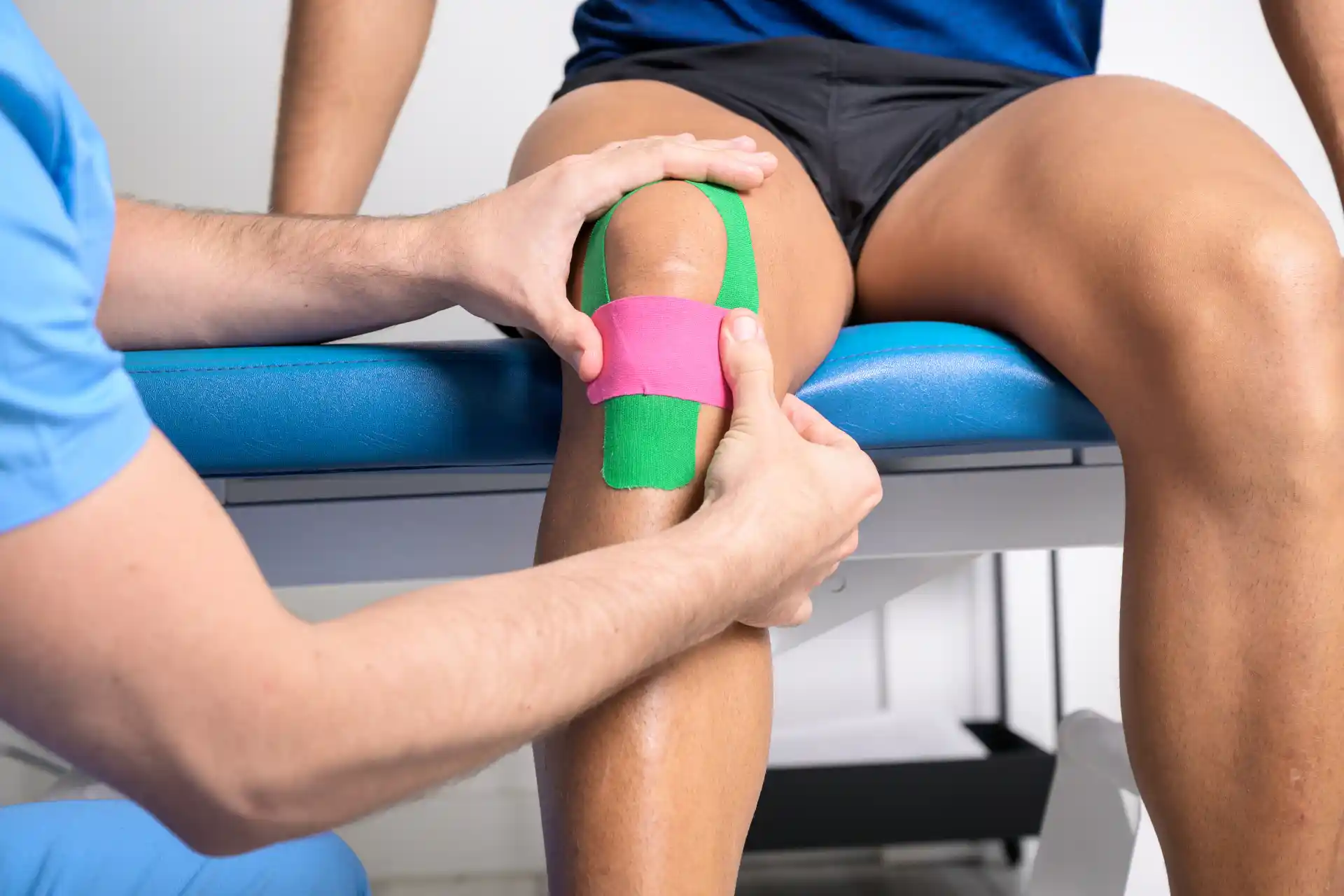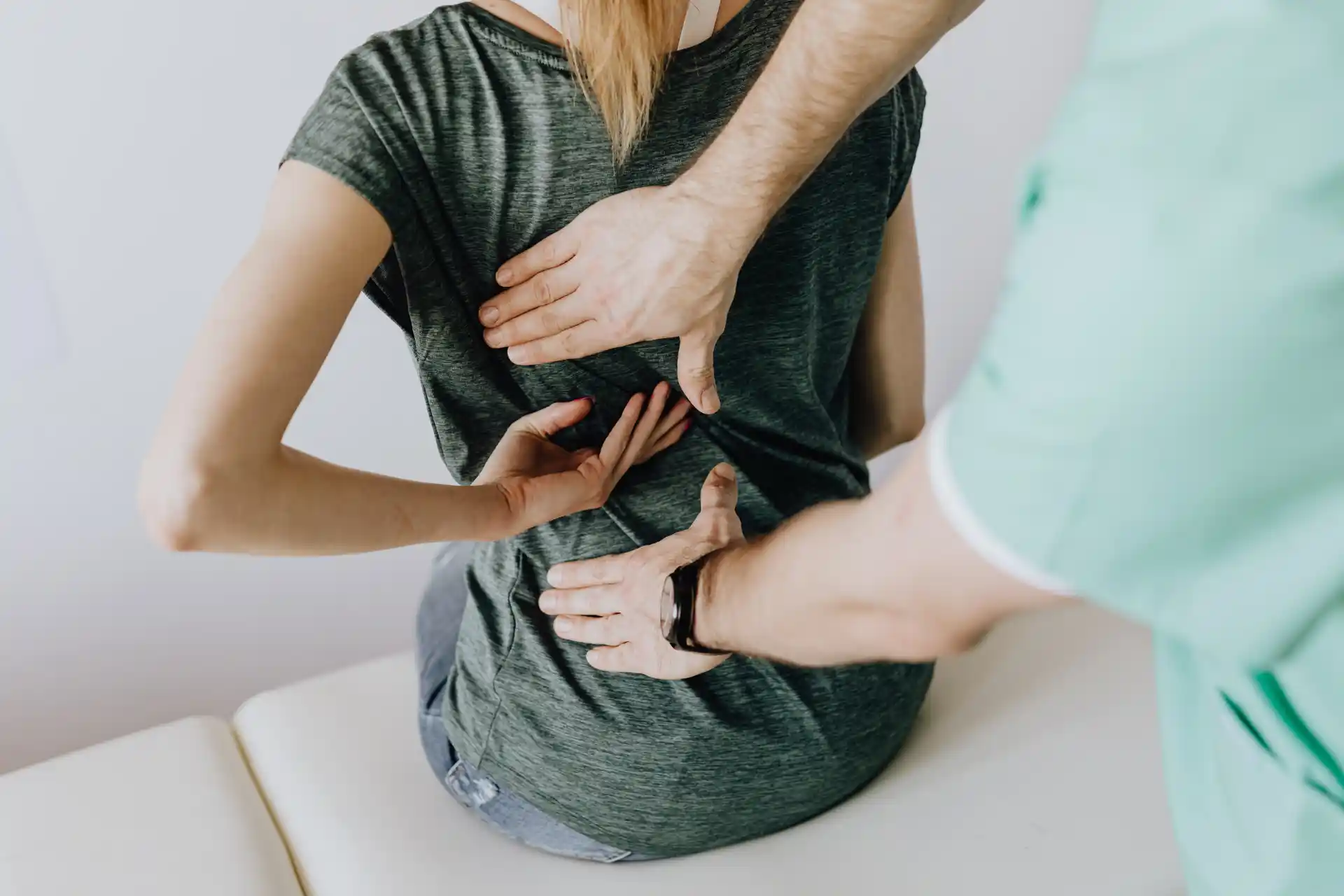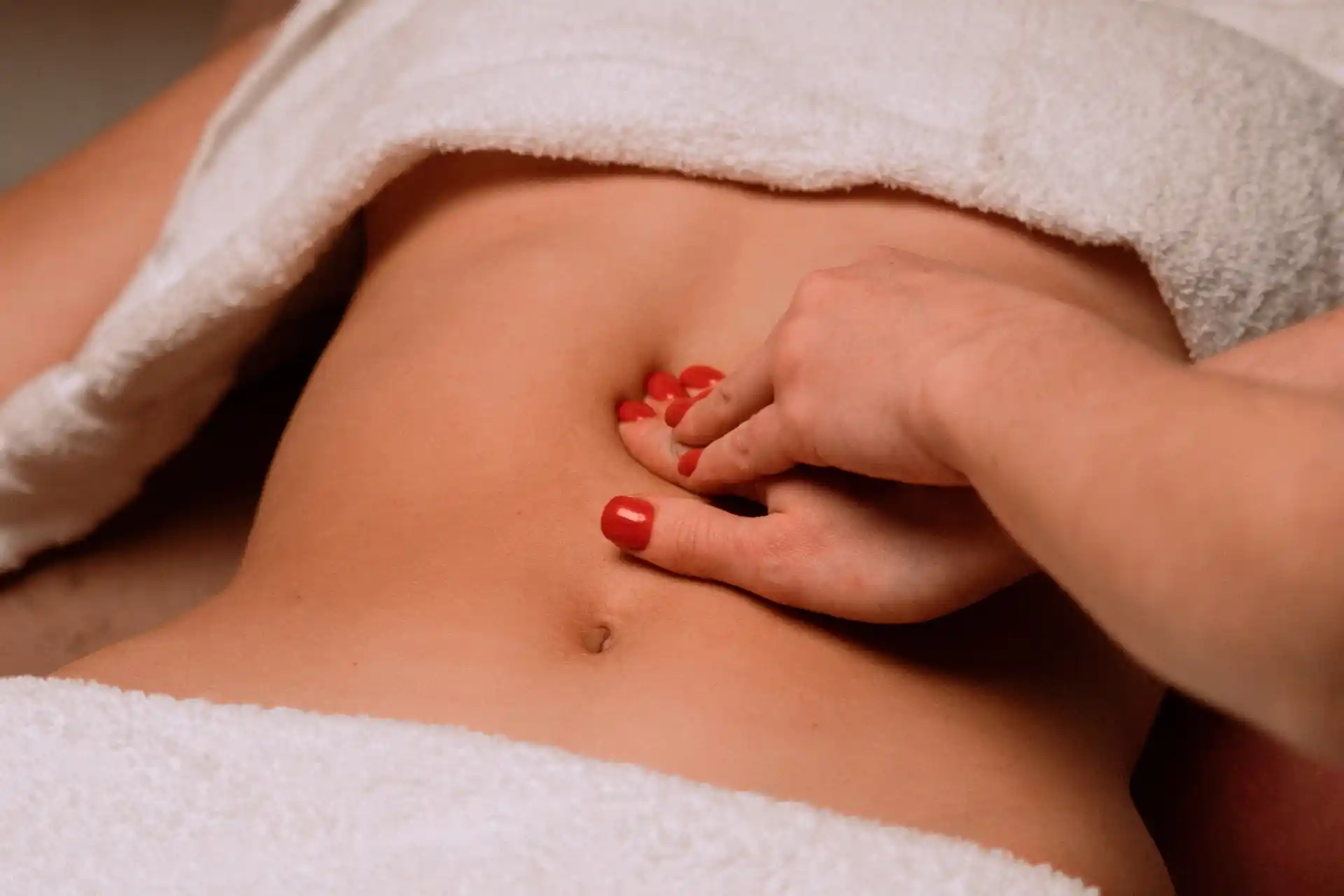Treating Knee Pain Without Surgery
Managing knee arthritis without resorting to surgery is entirely possible with the right approach.
These treatment options should be treated as a general guideline, always consult with a healthcare professional for personalized guidance on exercise and treatment that is right for your knee pain.
To learn more about various conditions that can cause knee pain, check out our dedicated articles on osteoarthritis, rheumatoid arthritis, patellar tendinitis and ligament injuries.
Below are some effective methods that require some small lifestyle changes:
Exercise Therapy for Knee Arthritis
Exercise therapy is a practical and non-invasive strategy for alleviating symptoms of knee osteoarthritis and pain. Exercise aims to reduce pain, stiffness, and improve joint function and quality of life.
Different types of exercise can offer various benefits:
- Aquatic Exercise: A low impact exercise for gentle but effective pain relief.
- Yoga: Improves joint stiffness and overall mobility, as well as increasing mind-body awareness.
- Resistance Training: Beneficial for muscle and joint strength and resilience.
Weight Loss Impact on Knee Pain
Losing weight can significantly alleviate the stress on your knees. Research indicates that losing just 10 pounds can reduce the stress on your knee joint by approximately 40 pounds of pressure on your joints.
This can be particularly beneficial for those managing knee arthritis, as it helps to reduce pain, restore mobility, and improve the overall quality of life.
Bracing
Bracing is another effective method for managing knee pain without surgery. The use of a brace can help redistribute forces within the knee joint, decrease swelling, provide necessary support and stability, and alleviate symptoms of knee arthritis.
Various types of braces are available, each designed to address specific issues:
Physical Therapy
When dealing with knee pain, seeking professional guidance can be highly beneficial. Physical therapy, in particular, offers numerous advantages over home exercises, providing tailored exercise programs designed to address your specific condition (Healthline).
By working with a physical therapist, you can receive personalized assessments and treatment plans that target the root cause of your discomfort.
Physical therapists utilize various techniques to help alleviate knee pain and improve mobility. These may include:
- Manual Therapy: Hands-on techniques to improve joint and muscle function.
- Therapeutic Exercises: Customized movements to strengthen supporting muscles and enhance knee stability.
- Education: Guidance on proper movement techniques to prevent further injury.
Physical therapy focuses on strengthening the muscles around your knee, which can help stabilize the joint, decrease forces passing through the knee, and ultimately reduce symptoms.
For detailed exercise recommendations, check out our articles on knee strengthening exercises and stretches for knee pain.
Medication and Acupuncture for Relief
Over-the-counter medications like NSAIDs (e.g., naproxen) and topical creams can also help reduce inflammation and pain associated with knee arthritis.
Capsaicin-based topical treatments like Capzasin-HP and Zostrix can effectively reduce pain in knee and hand osteoarthritis.
For more on medicative treatments, visit our section on what is the best painkiller for knee pain.
Acupuncture, a traditional Chinese medical practice involving the insertion of thin needles into specific points on the body, has also been found to relieve knee pain. While results can vary, many individuals report experiencing less pain and more ease of movement after acupuncture treatments (Healthline).
These non-surgical options can significantly improve your quality of life by reducing pain, enhancing mobility, and providing much-needed support for your knees.
For additional alternative treatments, you might find our articles on knee repair without surgery, regenerative treatment for knee pain and top exercises for knee pain helpful.
Dietary Supplements for Joint Health
Dietary supplements play a valuable role in supporting joint health and reducing the discomfort associated with arthritis.
There are limited evidence on the efficacy of dietary supplements on joint health, so always consult with a healthcare professional before starting a new supplement or diet for your joint pain.
Here are some notable supplements:
- Glucosamine and Chondroitin: These are popular supplements believed to support joint health and decrease inflammation and pain linked to osteoarthritis.
- Omega-3 Fatty Acids: Found in fish oil, these fatty acids have anti-inflammatory properties that can help reduce joint pain associated with arthritis.
- Ginger: According to three randomized controlled trials, ginger may decrease the severity of knee osteoarthritis pain and reduce specific inflammatory biomarkers.
Nutrition and Home Modifications
Nutrition impacts knee arthritis significantly. A diet rich in vitamins, calcium, protein, and Omega-3 fatty acids can improve joint health.
Following a balanced diet can mitigate inflammation and support overall joint function.
Additionally, modifying your living and working spaces can reduce strain on your knees. Utilizing assistive devices and ergonomic solutions can significantly improve your quality of life:
- Install grab bars in bathrooms
- Use ergonomic chairs
- Arrange furniture to minimize the need for bending or squatting
Such adjustments can make daily activities more comfortable and reduce the risk of knee injuries. Implementing home modifications is a simple yet effective way to ease knee arthritis symptoms and enhance mobility.
By incorporating these lifestyle modifications, you can manage knee arthritis more effectively and reduce the need for invasive treatments.
Seek RELIEF®
RELIEF® is a science-backed, targeted approach that targets dysfunctional fascia that surrounds the affected knee tendons.
The treatment utilizes hydrodissection—a fluid-based technique that gently separates and releases adhered soft tissue layers and fascia, which may contribute to knee pain and degenerative joint symptoms.1,2,3,4,5,6,7
RELIEF® is a minimally invasive alternative to traditional treatments—and requires no steroids, medication, surgery, anesthesia, or post-procedure immobilization.
Contact us today to schedule a consultation and learn more about how RELIEF® may help with your knee pain.

.jpg)
.webp)



.svg)